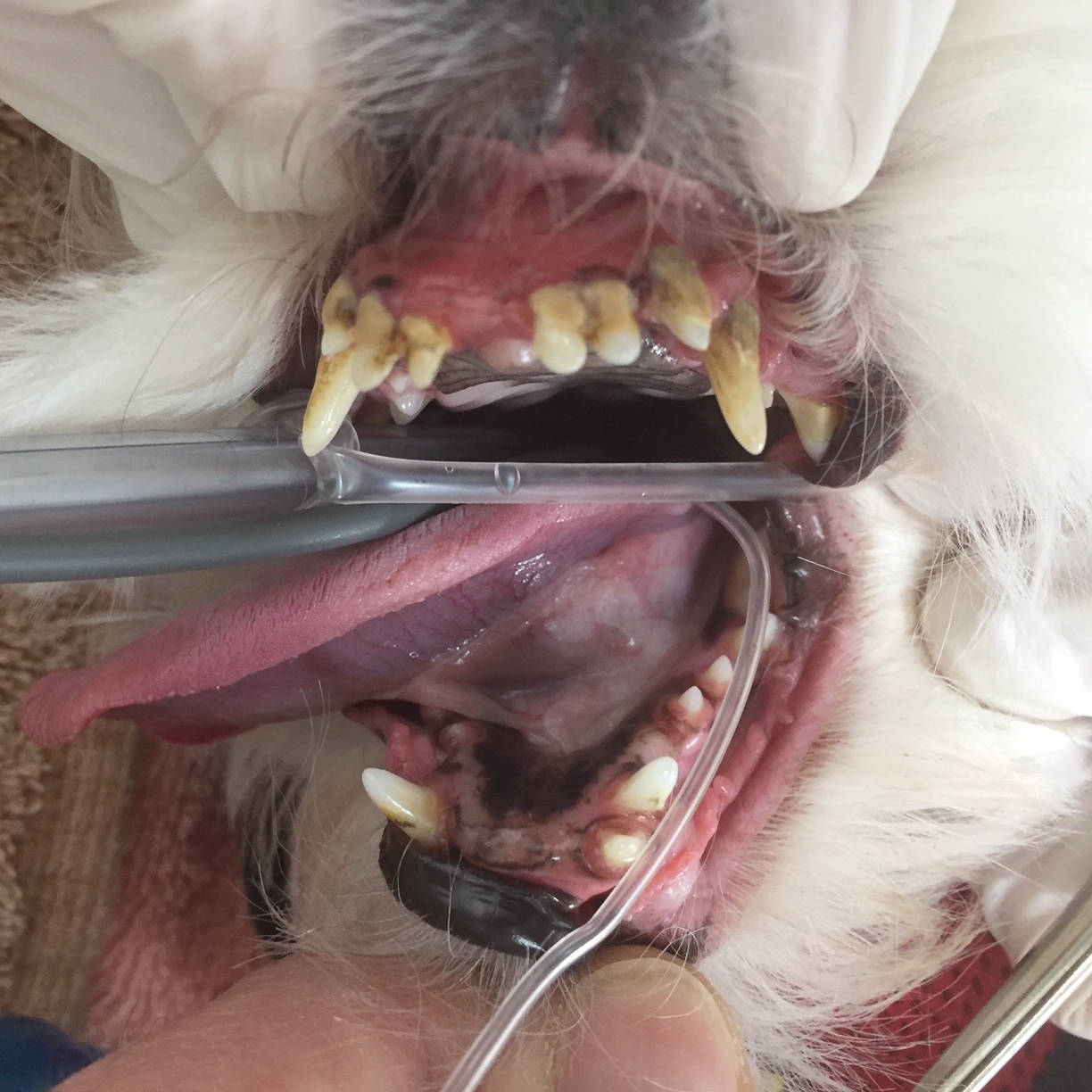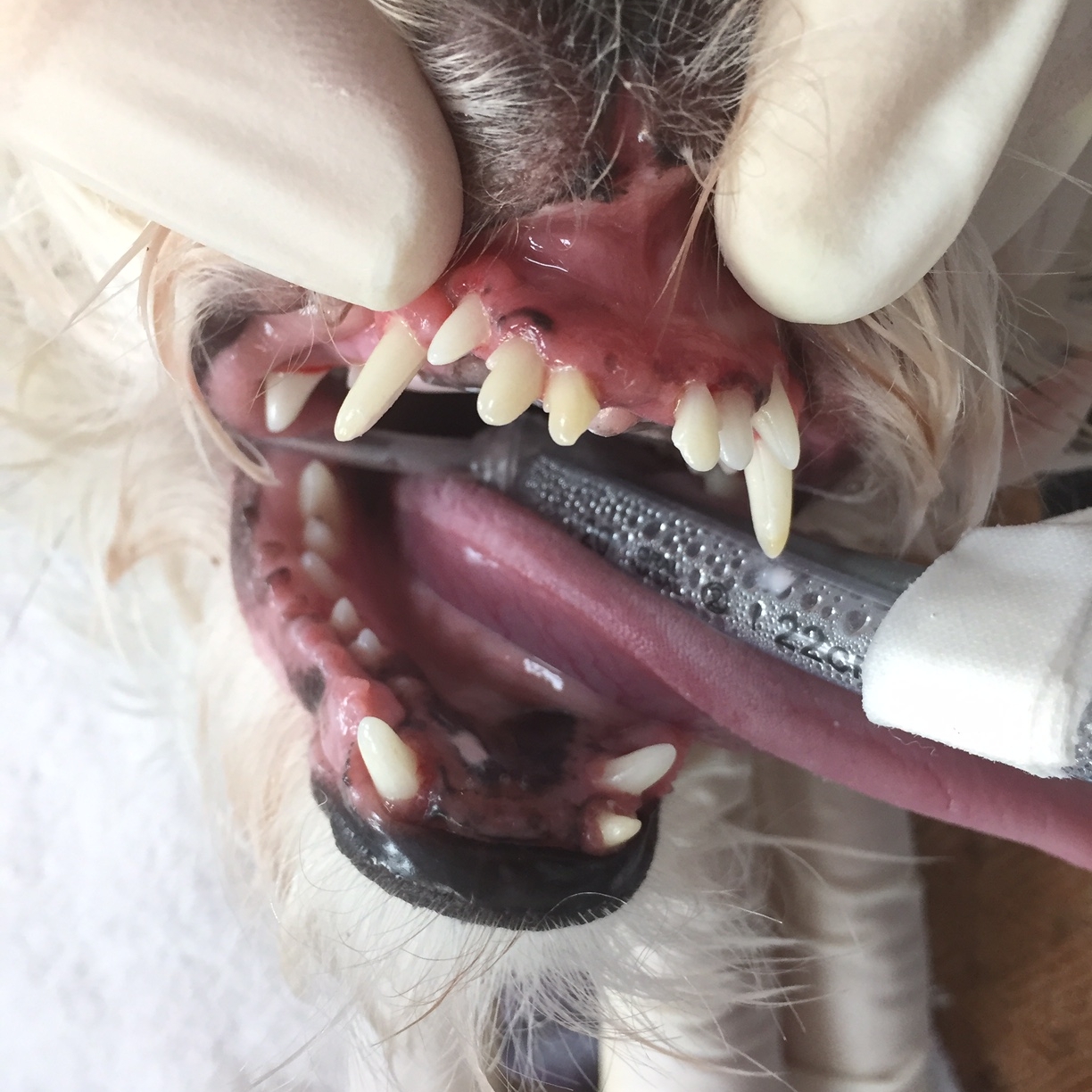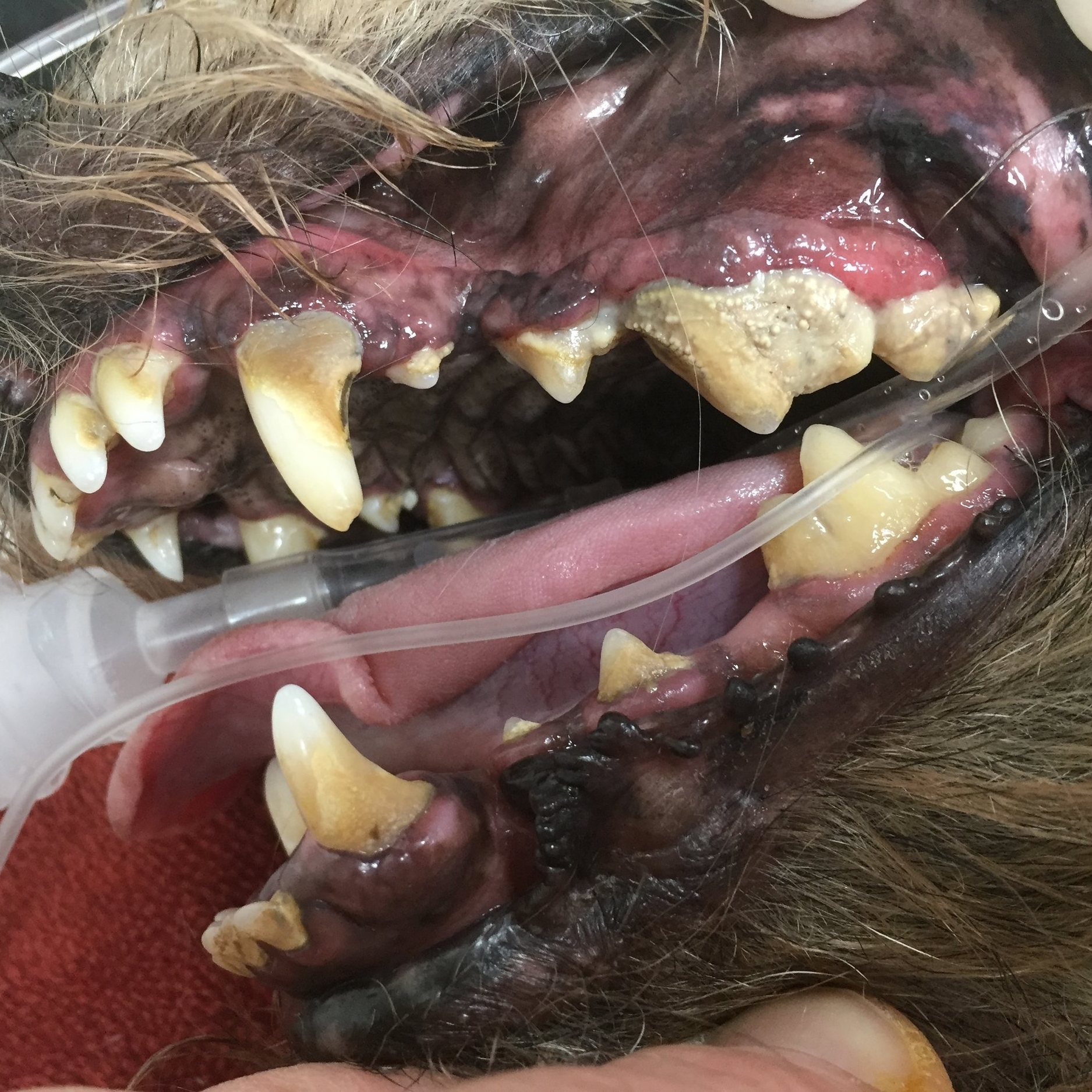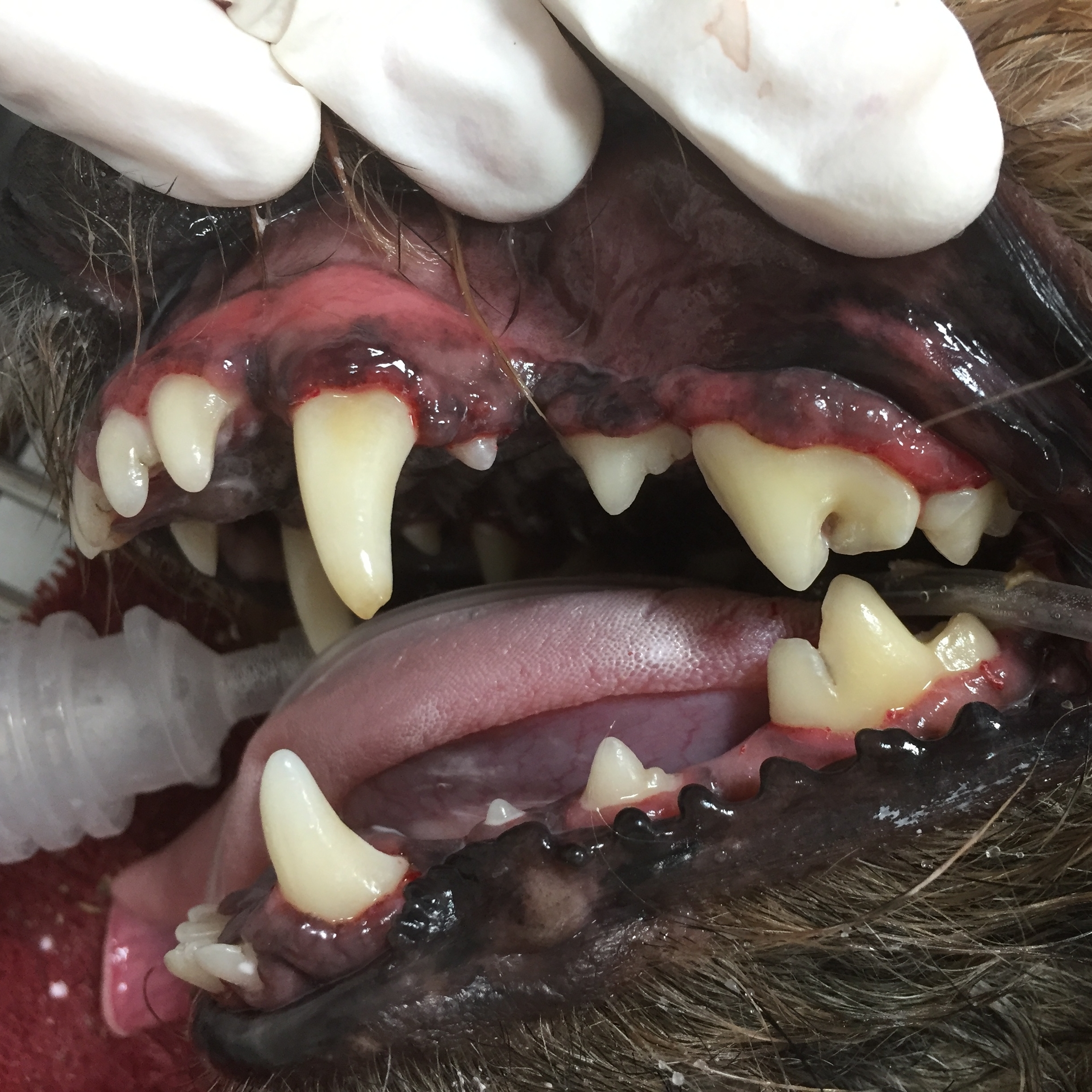In moderate to severe cases periodontal disease causes bone loss, tissue destruction, tooth loss, bad breath, weight loss, inflammation, and PAIN. It has also been known to cause or worsen conditions such as kidney and heart disease.
Bad breath
Yellow-brown crust on teeth
Bleeding gums
Change in chewing or eating habits
Tooth loss
Abnormal drooling
Stage 4 periodontal disease in a cat.
Plaque builds up on a pet’s teeth
Bacteria in the plaque irritates the pet’s gums
The irritated gums bleed, allowing bacteria from the plaque to enter the bloodstream
Bacteria in the bloodstream travels throughout the body, and can negatively impact vital organs, such as the heart and kidneys
Once under general anesthesia, a chlorohexidine gel is applied to help decrease the amount of bacteria. At Rouge Valley Veterinary Hospital, we perform all dental procedures while your pet is under a general anesthetic.*
The gross (large pieces) of calculus are removed with special forceps (if applicable).
The teeth are all ultrasonically scaled to remove tartar.
The teeth are then hand scaled above and below the gum line.
Each tooth is examined for periodontal pockets, mobility, gum recession and/or other changes that can occur from dental disease.
All teeth are then polished above and below the gum line.
Dental Radiographs are taken to check for issues not visible by the naked eye (such as bone loss).
If necessary dental extractions are done or remove teeth that cannot be salvaged by cleaning.
A fluoride treatment is then applied as a final touch.




The College of Veterinarians of Ontario, the American Animal Health Association and the American Veterinary Dental College all state that, in short, dentistry done without the use of general anesthetics is malpractice.
A Comprehensive Oral Health Assessment and Treatment (COHAT), unfortunately, is impossible to do properly without the use of general anesthesia. The “anesthetic free” dental cleaning approach is not only painful, unsafe and stressful for your pet, but NOT EFFECTIVE and can actually cause complications. For more information please feel free to ask us.
Many pet owners are reluctant to pursue a dental prophylaxis due to the fear of anesthesia. Although it is good to understand that, as with any procedure, anesthetics do carry some degree of risk, our protocols in veterinary medicine have come a long way.
A pre-anesthetic blood test is always HIGHLY recommended to check your pet’s organ function prior to GA (general anesthesia). If there are any insufficiencies/concerns Dr.Gotovac will discuss next steps with you. This is to make sure we are making the procedure as safe as possible.
A variety of oral rinses are available. Some can be added to your pet’s drinking water.
Hill's t/d diet is the ONLY diet that has been clinically proven to decrease plaque and tartar build up. Hill's t/d is a low calorie adult maintenance diet with the added benefit of providing oral care. The fibromatrix composition of the kibble (a special design) is the secret behind its success. When your pet chews, instead of crumbling like other kibble on contact, the t/d encompasses the tooth scraping off small amounts of plaque with each bite.
Dental Chews are also available that have enzymes to help break down plaque as the dog enjoys a tasty treat (for overweight dogs be aware of added calories with treats).
Look for the VOHC seal when buying pet store chews/products.
By far brushing your pets teeth is the best form of dental home care. It decrease well over half of the plaque burden when done on a daily basis. The key to brushing a cat/dogs teeth is positive reinforcement, repetition and starting before the mouth is painful!
Instinctively, our pets hide pain so as not to appear weak to predators. Furthermore, they will continue to eat through excruciating pain so as not to risk starvation. This makes it difficult for us, as owners, to determine whether or not our pets are experiencing pain. We have to remember despite the fact that our pets have been domesticated for thousands of years they still retain the most basic survival instincts. Eat or be eaten. This is why routine dental check ups with your veterinarian are essential.
Although certain conditions are more common in older pets, age itself is not a disease, and therefore should not be the sole reason for not pursing a dental cleaning. Periodontal disease can attribute or exacerbate conditions such as cardiac and renal disease. Keeping a healthy mouth is an essential part of overall health, for your pets' whole lives.
It is important to remember that even with excellent dental home care, professional cleanings are still necessary. It is well known that we humans, who brush our teeth 2–3 times daily, still need to seek a professional cleaning every 6–9 months.
The goal with home care is to maintain good oral health between visits, decrease the amount of bacteria in the mouth, slow the progression of periodontal disease, decrease the length of dental cleanings and most importantly increase the health and life span of our furry family members.
"Add More Smiles to Their Life" Hill's Pet Nutrition, Inc. Web. 01 Feb. 2017. <http://www.petdental.ca/en-ca/index.html>.
